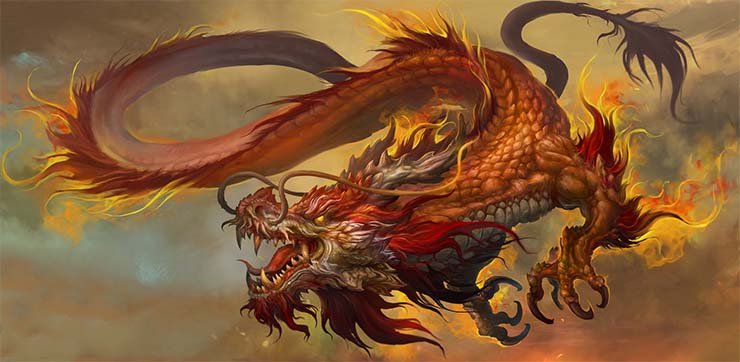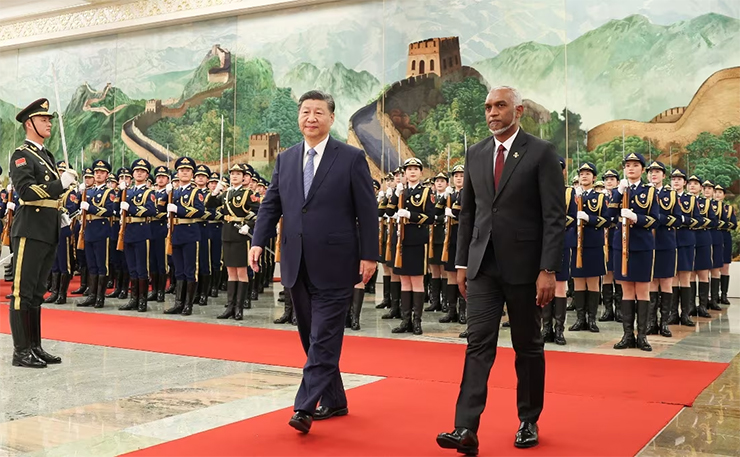
To the surprise of India watchers, while the Maldives is undergoing political turmoil with the pro-China leaning President Mohamed Muizzu facing the threat of impeachment from the opposition—comprising the Maldivian Democratic Party (MDP) and the Democrats—Indian officials calmly sat at the table with Maldivian officials in Male on January 29 to iron out the details of the Greater Male Connectivity Project.
The project involves the construction of a 6.74-kilometer-long bridge and causeway link connecting Male, the Maldivian capital, with the adjoining islands of Villingli, Gulhifalhu, and Thilafushi. Funded by an Indian grant of $100 million and a Line of Credit of $400 million, this initiative represents the largest developmental project by India in its neighbourhood. As of January 28, landing at the India-built Hanimaadhoo International Airport has commenced, providing a significant boost to regional connectivity.
The Maldivian airport has been constructed with a concessional Line of Credit provided by India’s Exim Bank, offering New Delhi a crucial opportunity to showcase its approach toward the archipelagic country. This holds particular significance as the government led by President Mohamed Muizzu has taken actions against India and its interests.
In the aftermath of three Maldivian ministers using derogatory language in their social media posts directed at Prime Minister Narendra Modi and Indians, President Mohamed Muizzu embarked on a five-day state visit to China from January 8 to 12, following his first overseas trip to Turkey since assuming the presidency.
Following President Mohamed Muizzu’s visit to China, the presence of the survey ship Xiang Yang Hong 03 in Maldivian waters has been noted since January 22. Reports also indicate the entry of another Chinese vessel, ‘Blue Ocean 201,’ weighing 3,000 tons, into the Maldivian waters of the Indian Ocean in the last week of January. India, located just 70 nautical miles from the Maldives, has expressed reservations about these developments, with Ministry of External Affairs Spokesperson Randhir Jaiswal stating, “We keep a close eye on the situation.”
Aware of President Muizzu’s potentially detrimental actions against India, the Maldivian people have taken it upon themselves to assert their stance. The political circles in Male are buzzing with the MDP and its rival, the Democrats, coming together in a joint effort to impeach the Maldivian President
This comment was cryptic. Aware of President Muizzu’s potentially detrimental actions against India, the Maldivian people have taken it upon themselves to assert their stance. The political circles in Male are buzzing with the MDP and its rival, the Democrats, coming together in a joint effort to impeach the Maldivian President.
Interesting facts tumbling out of the archipelagic country’s complex political shelf are that former Maldivian President Abdulla Yameen is also working behind the scene for the impeachment of Mohamed Muizzu as the latter has hijacked the coalition of Progressive Party of Maldives (PPM) — People’s National Congress that won the election in the country — in his favour. It was, however, not a sudden development.
On November 24, 2023, Abdulla Yameen announced his resignation from the PPM, providing an opening for Mohamed Muizzu to assume control. Notably, Muizzu is already leading the People’s National Congress (PNC), a party founded by Abdulla Yameen in October 2019.
Both Yameen and Mohamed Muizzu were initially part of the ‘India Out’ campaign. However, a rift emerged between them when Abdulla Yameen perceived that the Muizzu administration was consistently sidelining him on matters of political, international, and economic significance. The impeachment process, expected to take 15-16 days, highlights the challenges faced by Mohamed Muizzu in retaining the presidential chair while playing against India and its interests.
Observant international analysts suggest that a pro-India sentiment still prevails among a significant portion of the Maldivian population because New Delhi has prioritized development over politics. Despite facing opposition from the Muizzu administration, India has provided $72 million in financial aid to the Maldives in the current financial year, underscoring New Delhi’s ongoing engagement with the archipelagic nation.
In Bhutan, India remains steadfast in its strategy to counter China’s attempts to quietly diminish New Delhi’s influence over the Himalayan country. Since the 2017 Doklam crisis, during which India thwarted China’s ambitions in Bhutan, China has been employing various means, including trade, infrastructure development, and tourism, to pull Bhutan into its sphere of influence. In a bid to strengthen its foothold in Thimphu, China is exerting pressure on Bhutan to establish diplomatic relations with it.

In October 2023, during the boundary talks, Bhutan’s then Foreign Minister, Dr Tandi Dorji, visited China and held meetings with Chinese Vice President Han Zheng and Foreign Minister Wang Yi. During these discussions, Dr Tandi Dorji expressed willingness to expedite the boundary demarcation process and initiate diplomatic relations between the two countries.
This development has raised concerns within India’s strategic circles, with experts cautioning that Beijing is actively pursuing a longstanding aspiration: moving closer to India’s ‘Chicken Neck’ in Siliguri and potentially detaching the Northeastern region from India. There is apprehension that the Bhutan-China boundary talks might eventually result in land swaps.
Some experts have issued warnings, expressing the fear that if China swaps territory closer to Bhutan in exchange for land near Doklam, it could pose a significant challenge for India. There is a prevailing concern that after China resolves its boundary disputes with Bhutan, it may seek diplomatic presence from Thimphu, creating a potential threat for India.
To gauge the sentiments of Indian leaders, Bhutan’s King Jigme Khesar Namgyel Wangchuck, accompanied by senior officials, embarked on an eight-day visit from November 3-10 to India. During the visit, he engaged in discussions with Prime Minister Narendra Modi, covering a range of bilateral, regional, and global issues.
It is suggested that the Bhutan King’s visit played a pivotal role in altering Thimphu’s diplomatic and strategic considerations in the region. This shift was notably reflected in the joint statement issued after the meeting between Bhutan King Jigme Khesar and Prime Minister Modi. According to the joint statement, the Bhutan King “conveyed appreciation for the invaluable support that the Government of India continues to provide for Bhutan’s socio-economic development.”
India, currently involved in a railway project connecting Assam’s Kokrajhar with Bhutan’s Gelephu, is actively pursuing various infrastructure initiatives in collaboration with Bhutan. The partnership extends to programs encompassing skill development, energy, space, environment, education, and health. Notably, in India’s interim budget for 2024, Bhutan has received over $2.6 billion in financial assistance.
This development has raised concerns within India’s strategic circles, with experts cautioning that Beijing is actively pursuing a longstanding aspiration: moving closer to India’s ‘Chicken Neck’ in Siliguri and potentially detaching the Northeastern region from India. There is apprehension that the Bhutan-China boundary talks might eventually result in land swaps
The recently concluded visit of Foreign Secretary Vinay Mohan Kwatra and a team of MEA officials to Bhutan underscores India’s commitment to prevent Thimphu from falling into Beijing’s influence. This effort comes at a crucial time when Bhutan is working towards resolving its border dispute with China.
In Nepal, India is posing a formidable challenge to China in the realms of connectivity, energy, and infrastructure development. India has already completed a detailed feasibility study for the Raxaul-Kathmandu railway project, while China has just initiated a feasibility study for the proposed Kerung-Kathmandu cross-border railway.
In the energy sector, India and Nepal, during the visit of External Affairs Minister S Jaishankar to Kathmandu on January 4-5, signed a Memorandum of Understanding (MoU) for the purchase of 10,000MW of electricity from Nepal over the next decade. Additionally, India has provided Rs 10 billion in financial aid to Nepal for the reconstruction of buildings and other infrastructure in Jajarkot and Rukum West, severely affected by the earthquake in November 2023.
In stark contrast, China’s involvement in Nepal appears to be causing more harm than good. The Pokhara International Airport, constructed with China’s assistance, has yet to attract landings by planes from foreign airlines, despite more than a year passing since its inauguration. Experts attribute the challenges faced by the Pokhara International Airport, situated 201 km away from Kathmandu, Nepal’s capital city to its location amidst the rugged mountains of Nepal. It can only accommodate narrow-body jets with a low payload capacity. On January 15, 2023, a Yeti Airlines twin-engine ATR 72 plane, carrying 72 people, crashed while attempting to land at the airport. Since this incident, international flights have been hesitant to land and take off from the airport, which has been mired in controversy since its launch on January 1, 2023, by Prime Minister Pushpa Kamal Dahal, also known as Prachanda. China unilaterally declared it as part of its Belt and Road Initiative. To date, the airport has witnessed the landing of only one international plane—an A319 aircraft from China’s Sichuan Airlines with 70 passengers and cargo in the third week of June 2023. Overall, India is strategically securing its position in the challenging dynamics of South Asian diplomacy.















